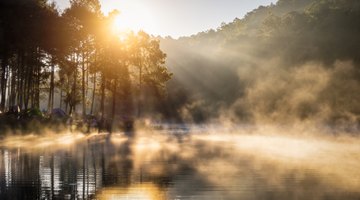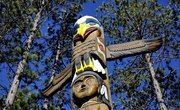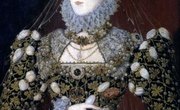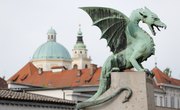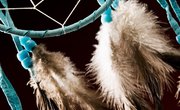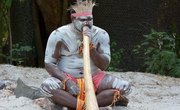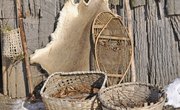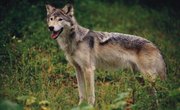The Algonquin-speaking peoples were the largest Indian group in what is now the eastern United States, inhabiting lands from Hudson Bay south to North Carolina and west to the Mississippi River. They were not a single nation, but loosely interrelated peoples within the same language group. Most Algonquin-speaking tribes lived by hunting and fishing -- the word Algonquin means “place of spearing fish from the bow of a canoe.”
Creation Myth
The Algonquin believed that nature was inhabited by spirits that intermixed with the physical world. Gitchi Manitou (sometimes spelled Kitchi Manitou) was the animating spiritual force behind the world for many Algonquin-speaking tribes, in particular the Anishinabe of Canada. According to Anishinabe belief, Gitchi Manitou created the world. Before humans came, the earth had been inhabited only by animals, but when they started fighting, Gitchi Manitou lost patience, flooded the world, and started a new one where people were the masters.
Algonquin Spirits
Gitchee Manitou was benevolent, but remained an abstract figure compared to other spiritual beings within the Algonquin belief system. A central figure was Michabo, the Great Hare, the Trickster God (also known as Nanabozho). Although mischievous, he was beloved as a god who imparted wisdom to humankind. Michabo’s younger brother (or sometimes twin) is Chibiabos, who sometimes appeared on earth in the guise of wolf. He was murdered by water spirits and became ruler of the underworld where he was known for his kindness to the dead. Michabo’s grandmother was the important goddess Nokomis, the Earth Mother, who was also called “the daughter of the moon;” she provided riches and prosperity to humans.
Cannibal Monsters
Not all the figures in the Algonquin cosmogony were so benign, however. The Algonquin-speaking Indians of northeastern Canada were haunted by cannibalistic windigo monsters, evil spirits who could be found in the deepest woods. The windigoes were men and women who had gotten lost in the woods and resorted to cannibalism, which cursed them with an insatiable urge to eat human flesh. (In some Algonquin legends, you could become a windigo simply by dreaming about one.) The only way to get rid of a windigo was to kill and burn him.
Shamans
Shamans were important figures in Algonquin spiritual life, because they were the only people who could communicate with spirits and ward off evil. Algonquin-speaking peoples believed in witches to such an extent that they were afraid to tell people their real names, lest their enemies might gain spiritual power over them. Shamans could protect people from witches as well as heal the sick by performing cleansing ceremonies to drive out evil. Much like the Freudian psychoanalysts who followed them centuries later, Algonquin shamans also interpreted dreams, because the Algonquin-speaking peoples believed that the future could be foretold in the signs and symbols of a dream.
Related Articles
References
Resources
Writer Bio
Based in New Jersey, Joseph Cummins has been a freelance writer since 2002. He has written 17 books covering history, politics and culture. He has a Master of Fine Arts in writing from Columbia University. His work has been featured in "The New York Times" Freakonomics blog, "Politico," "New York Archives" magazine, "The Carolina Quarterly," "The Michigan Quarterly" and elsewhere.

